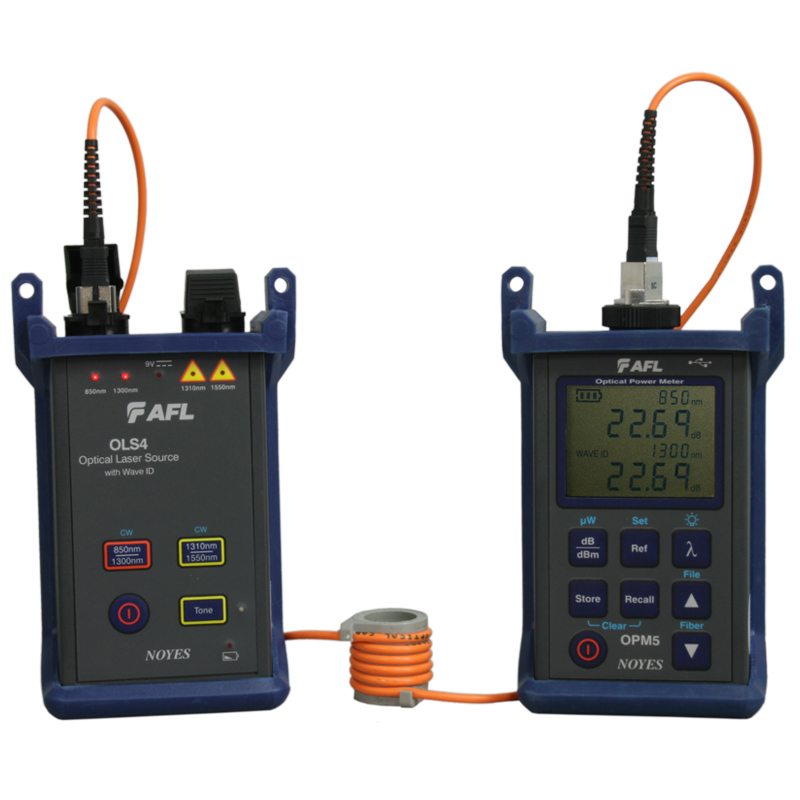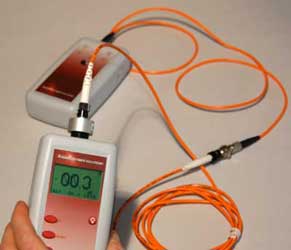The integration of robotic vision delivers precision in production.
The integration of robotic vision delivers precision in production.
Blog Article
Introducing the Trick Uses of Optical Fibre Examining for Efficient Data Transmission
In the realm of modern-day communication, optical fibre testing arises as an essential technique for optimizing information transmission. By using techniques such as Optical Time Domain Name Reflectometry (OTDR) and insertion loss evaluations, network operators can efficiently identify and resolve problems that may compromise signal integrity. As the need for faster and much more dependable links remains to climb, the ramifications of these testing methods prolong past immediate fault discovery, affecting long-lasting network efficiency. Recognizing the diverse applications of optical fiber screening invites a deeper expedition right into its pivotal duty fit the future of information interaction.

Significance of Optical Fiber Screening
The value of optical fibre screening can not be overemphasized, as it acts as a crucial component in ensuring the dependability and efficiency of information transmission systems. In a period where high-speed interaction is vital, any kind of shortages in fiber optics can cause considerable data loss and lowered efficiency. Extensive screening methods are vital to confirm the stability and performance of optical cable televisions.
Testing permits for the recognition of issues such as micro-bends, macrobends, and splice losses that might impede signal quality. Additionally, it gives understandings into the total attenuation and bandwidth abilities of the fiber, making certain that the network satisfies specific operational requirements. Normal screening not just enhances system performance yet also lengthens the life-span of the framework by recognizing potential problems prior to they intensify into expensive failures.

Kinds Of Optical Fibre Examinations
Various kinds of optical fibre tests are conducted to make certain the efficiency and reliability of fibre optic networks. These examinations can be categorized right into a number of vital types, each offering a specific function in analyzing the stability of the fiber.
First, Optical Time Domain Reflectometry (OTDR) is a noticeable examination that determines mistakes, entwines, and connectors within the fibre. By sending pulses of light and examining the mirrored signals, service technicians can identify problems along the fibre's length.
2nd, insertion loss examinations evaluate the quantity of signal loss when light passes via adapters or splices, which is critical for maintaining network performance.
Third, return loss examinations determine the amount of light showed back towards the source, offering insights into the quality of connections and prospective sources of interference.
Furthermore, connection examinations make sure that the fibre path is complete, allowing specialists to confirm that the fibre is intact with no breaks. fibre testing equipment.
Lastly, aesthetic fault locators utilize noticeable important link light to identify breaks or severe bends in the fibre, assisting in fast troubleshooting. Collectively, these tests create a thorough technique to maintaining optimal performance in fiber optic networks.

Applications in Network Maintenance
In modern telecoms, efficient network maintenance counts greatly on optical fibre screening to determine and rectify issues quickly. Routine testing ensures that the network operates at optimum efficiency levels, lowering downtime and improving individual experience.
Among the primary applications of optical fiber screening in maintenance is the detection of mistakes, such as breaks, flexes, or inappropriate links. Techniques like Optical Time Domain Reflectometry (OTDR) permit specialists to locate these issues properly and assess the high quality of the fibre web link. Furthermore, loss testing validates the honesty of the optical course, making certain that signal attenuation stays within appropriate limitations.
Routine upkeep screening likewise assists in safety nets, identifying prospective issues prior to they rise into substantial failings. This positive approach can conserve organizations both time and funds. During upgrades or expansions, optical fibre testing makes certain that new setups integrate perfectly with existing facilities.
Enhancing Information Transmission Integrity
Effective network upkeep through optical fibre screening not only addresses immediate issues however likewise plays a substantial duty in enhancing information transmission dependability. By identifying mistakes, determining signal loss, and assessing the overall condition of fibre optic cables, screening makes sure that possible troubles are fixed prior to they intensify into significant disruptions.
Normal optical fibre screening, such as time-domain reflectometry (TDR) and optical time-domain reflectometry (OTDR), permits technicians to identify the precise areas of breaks, flexes, or connector concerns within the network. This proactive technique not just reduces downtime however also maximizes the performance of information transmission by guaranteeing that the pathways for signals are clear and functioning effectively.
Furthermore, screening help in validating adherence to industry criteria and requirements, which is essential for preserving the honesty of data circulation. By guaranteeing that each connection meets called for thresholds for loss and top quality, companies can strengthen their go to website confidence in the dependability of their information networks.
Eventually, purchasing comprehensive optical fiber testing not only enhances data transmission integrity however likewise supports the long-term functional performance of communication frameworks.
Future Fads in Fiber Screening
Emerging technologies are poised to reinvent fibre testing, leading the way for boosted effectiveness and accuracy in data transmission diagnostics (fibre testing equipment). click this link As the demand for faster net and greater data transfer continues to climb, the integration of advanced tools such as synthetic knowledge (AI) and artificial intelligence (ML) is readied to transform standard fibre screening techniques. These modern technologies will certainly allow anticipating upkeep and automated mistake detection, dramatically reducing downtime and enhancing network dependability
In addition, the fostering of Net of Points (IoT) gadgets will promote real-time monitoring of fiber networks, permitting prompt identification of efficiency problems. This change in the direction of proactive monitoring will decrease disruptions and enhance data flow.
In addition, technologies in optical time-domain reflectometry (OTDR) and new screening standards will boost the precision of dimensions, making sure that data stability is maintained throughout the transmission process. The arrival of 5G innovation also necessitates the growth of a lot more innovative fiber testing methods to sustain its high-speed requirements.
Conclusion
In verdict, optical fibre testing is crucial for preserving reliable information transmission within communication networks. Normal screening not only guarantees conformity with sector requirements but likewise assists in positive maintenance, inevitably contributing to the long-lasting dependability and performance of fiber optic systems.
Report this page